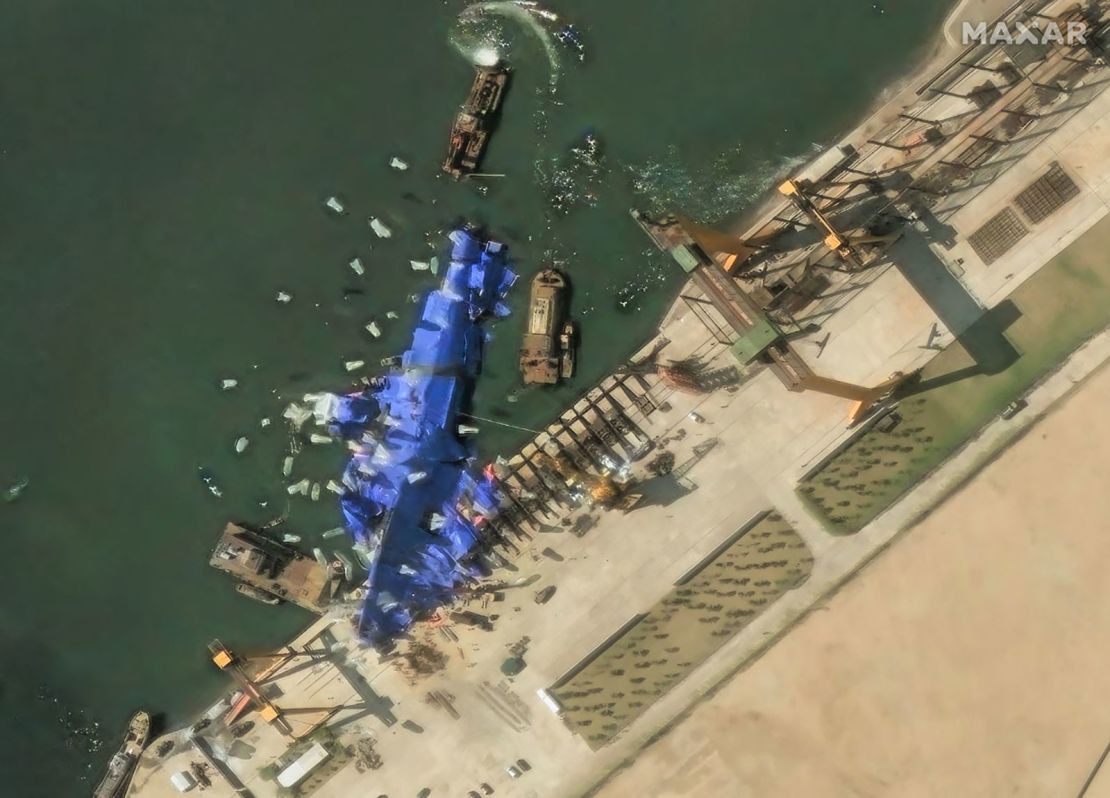Seoul, South Korea
CNN
—
North Korea says it has successfully refloated a new destroyer that capsized upon launch last month, with state media reporting the damaged vessel will be moved to a dry dock in a different shipyard for repairs.
“After restoring the balance of the destroyer early in June, the team moored it at the pier by safely conducting its end launching on Thursday afternoon,” a report from the state-run Korean Central News Agency (KCNA) said.
A satellite photo taken by Planet Labs on June 5 showed the formerly stricken vessel righted and seemingly floating in water away from the pier where the disastrous launch took place.
The 5,000-ton destroyer is the country’s newest warship and was meant to be a triumph of North Korea’s ambitious naval modernization effort.
Instead, a malfunction in the launch mechanism on May 21 caused the stern to slide prematurely into the water, crushing parts of the hull and leaving the bow stranded on the shipway, KCNA reported at the time. A day later, state media reported the damage was not as bad as initially feared.

Meanwhile, North Korean leader Kim Jong Un, who witnessed the failed launch in the northeastern city of Chongjin, called it a “criminal act,” and the government quickly said it arrested four people it claims are responsible for the launch accident.
Kim ordered officials to swiftly repair the as-yet-unnamed ship before the late-June plenary session of the ruling Workers’ Party, calling it a matter of national honor.
KCNA reported Friday that Kim’s goal will be met.
“The next-stage elaborate restoration is to be carried out at the dry dock of the Rajin Dockyard for the period of 7-10 days,” KCNA reported, adding that Central Committee Secretary Jo Chun Ryong, who is leading the repair effort, said “the perfect restoration of the destroyer will be completed without fail” before the plenary meeting.
The quick action to refloat the ship surprised analysts, who, based on satellite images of the accident, thought the process would take much longer.
“Sheer manpower and – let’s face it – an innovative approach to righting the ship, delivered a solution in two weeks that people like me didn’t expect for four to six,” said analyst Carl Schuster, a former US Navy captain.
The innovative approach apparently was using aerostatic balloons attached to the ship’s hull to help balance and refloat it, satellite imagery showed.

Damage to the hull was less severe than analysts expected when they saw what happened on May 21.
During the sideways launch, in which the ship was supposed to slide into the water laterally, the stern of the warship slipped into the water while the bow remained on land.
Analysts thought the stresses placed on the hull and keel during such an accident could have potentially led to its scrapping.
But “the hull damage must have been significantly less than estimated,” Schuster said.
Schuster said if North Korea can devote the same effort to internal repairs to the warship as it did to refloating it, it could be made ready for sea trials much sooner that he would have thought after the accident.
Internal spaces of the ship, as well as machinery and electronics, will have to be purged of sea water and dried salt in the repair process, he said.
“Nearly everything is doable if you are willing to commit the resources and have the human talent to employ it,” Schuster said.

